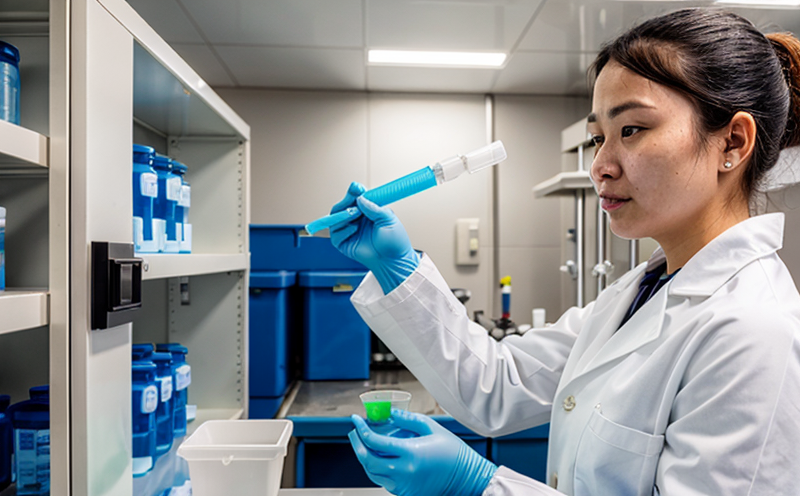USP Total Yeast and Mold Count Testing
The USP Total Yeast and Mold Count (TYMC) testing is a critical procedure in pharmaceutical quality assurance, ensuring the safety of drug products by quantifying the presence of yeast and mold species. This test is essential for compliance with regulatory standards such as the United States Pharmacopeia (USP), which mandates that no more than 10 CFU/g or mL should be present in finished drug products.
The significance of this test extends beyond mere compliance; it plays a pivotal role in safeguarding public health by preventing contamination from opportunistic pathogens like Candida species, Aspergillus flavus, and Penicillium roqueforti. The methodology involves the collection of samples under sterile conditions, followed by incubation on appropriate media to identify and count viable fungi.
The choice of media is crucial; Sabouraud Dextrose Agar (SDA) or similar selective media are commonly used for yeast and mold enumeration. This approach ensures accurate quantification while minimizing interference from other microbial contaminants. The test not only assesses the microbial load but also provides insights into the potential risk factors associated with fungal contamination.
The process begins with thorough preparation of the sample, ensuring it is free from external contaminants. Subsequently, the sample undergoes a dilution series to obtain an optimal range for accurate quantification. After incubation at appropriate temperatures (usually 25°C or 30°C), colonies are counted after sufficient growth.
Understanding the implications of fungal contamination in pharmaceutical formulations is paramount. Fungal species can lead to product spoilage, increased risk of adverse reactions, and potentially life-threatening infections in immunocompromised individuals. The USP TYMC test ensures that these risks are minimized by providing a quantitative measure of microbial load.
The instrumentation used for this testing includes specialized microscopes for colony counting and identification. Laboratories equipped with advanced imaging systems can enhance the accuracy of enumeration, especially when dealing with closely related species. Compliance officers and quality managers rely on consistent, reliable results from this test to maintain product integrity and meet regulatory requirements.
| Application Area | Description |
|---|---|
| Oral Solid Dosage Forms | The presence of yeast and mold in oral solid dosage forms can lead to product spoilage, especially under humid conditions. |
| Inhalation Products | Fungal contamination is particularly problematic for inhalation products due to the potential for severe respiratory infections. |
| Topical Preparations | Skin reactions and increased risk of fungal infections are concerns when yeast and mold levels exceed acceptable limits in topical formulations. |
| Use Case | Description |
|---|---|
| Manufacturing Quality Control | TYMC testing is performed at various stages of production to ensure the final product meets quality and safety standards. |
| R&D for New Formulations | The test helps identify potential sources of contamination in new formulations, guiding formulation adjustments where necessary. |
| Batch Release Testing | This ensures that each batch produced meets the quality and safety criteria set by regulatory bodies like the FDA and EMA. |
Why It Matters
The USP Total Yeast and Mold Count testing is not merely a compliance exercise; it represents a critical step in protecting public health. By adhering to this test, pharmaceutical manufacturers ensure that their products are safe for consumption or use. The presence of yeast and mold can lead to product instability, increased risk of contamination, and potential adverse reactions.
The importance of this testing cannot be overstated, especially considering the diverse range of drug products available on the market today. From oral medications to topical treatments, each formulation must undergo rigorous quality assurance processes, including TYMC testing, to ensure safety and efficacy.
Moreover, the test is essential for maintaining product integrity throughout its lifecycle. This includes ensuring that the product remains stable during storage and transportation, thereby extending shelf life and reducing waste. The USP guidelines provide a standardized approach to quantifying yeast and mold, which ensures consistency across different laboratories and facilities.
For pharmaceutical companies, compliance with these standards is not only a legal requirement but also a commitment to product quality and patient safety. By performing TYMC testing, manufacturers can identify potential issues early in the production process, allowing for timely corrective actions. This proactive approach helps prevent costly recalls and protects the company's reputation.
The implications of fungal contamination extend beyond immediate product quality concerns. They also impact long-term storage stability and patient compliance with medication regimens. Ensuring that drug products meet the stringent requirements of USP TYMC testing is crucial for maintaining public trust in pharmaceuticals as a safe and effective healthcare solution.





